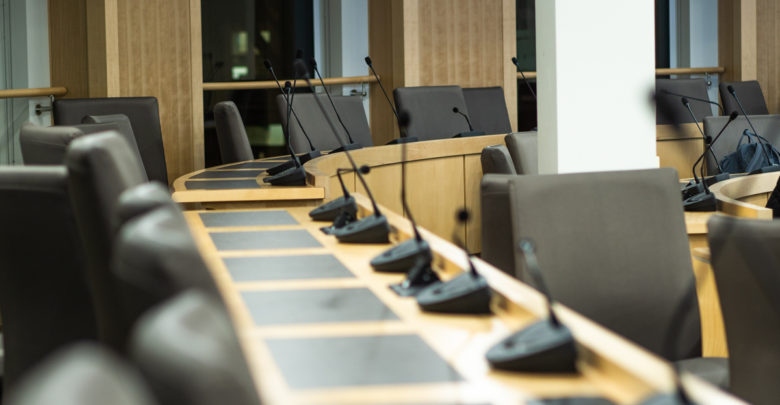BoG discusses IT security policy draft
Additionally, President and Vice-chancellor Bill Flanagan discussed the U of A's recent rankings.
 Helen Zhang
Helen ZhangAt the June 20 meeting of the University of Alberta Board of Governors (BoG), the information technology (IT) security policy was discussed and a SHAPE implementation report was presented.
The meeting began with a presentation from Jonathan Veinot, chemistry professor and associate dean of the college of natural and applied sciences, Robin Hamilton, chief technology officer of Dark Matter Materials Inc., and David Scott, chief operating officer of Applied Quantum Materials Inc..
The researchers discovered a catalyst that when placed in any quality of water at room temperature can produce hydrogen. This ability to generate hydrogen on demand is a “game changing discovery from the U of A,” Veinot said.
“The U of A stands in a position right now where it can actually revolutionize the hydrogen ecosystem,” Veinot said.
Veinot discussed the university’s recently launched Centre for Hydrogen Innovation, Workforce Development, and Outreach (CHIWDO) as a opportunity to further develop this research.
“This particular centre goes from production all the way through utilization as well as the social impacts,” Veinot said.
Report on SHAPE implementation
In his report, President and Vice-chancellor Bill Flanagan announced that the university has had a record fundraising year of $174 million. He also mentioned the university ranking in 94th place in the 2026 Quacquarelli Symonds (QS) World University Rankings and ranking among the top 10 in the 2025 Times Higher Education Impact Rankings.
“We have really continued to secure our position among the top 100 which is of huge importance to the university. This is a ranking that is looked at around the world. It’s also very influential in drawing international students.”
Provost and Vice-president (academic) Verna Yiu presented the interim report on the implementation of the U of A’s 10-year strategic plan SHAPE. Yiu said that the large majority of the plan’s deliverables are on track.
BoG member Rakesh Saraf inquired about risk areas surrounding the implementation. Yiu said that a main area of focus is international recruitment and retention. She said that the university is working with Immigration, Refugees, and Citizenship Canada (IRCC) in this regard.
BoG member Tom Ross inquired about the progress on the plan’s enrolment target of 50,000 students by next year. Yiu said that the university is focusing on targeted enrolment expansion (TEE) and working with the provincial government to expand TEE programs.
“We’re also hoping that some of our international numbers will be stabilized, so that we can get back to sort of pre-COVID[-19] levels,” Yiu said.
IT security policy draft discussed, concerns from GFC meeting addressed
Shari Baraniuk, chief information officer and associate vice-president (information services and technology), said that there has been “a very mixed reaction to the policy.”
“This really shows that we need to really address that balance of security controls and flexibility due to all of the research intensiveness that this university has,” Baraniuk said.
Dilini Vethanayagam, BoG member, mentioned that there were concerns about the policy at the May 26 General Faculties Council (GFC) meeting and asked if the policy team followed up with the concerned individuals.
Todd Gilchrist, vice-president (university services, operations and finance), said that, to his understanding, there was a conflation of the IT security policy and a policy on the provision and standardization of IT equipment.
Baraniuk said that the team did follow up with some concerned individuals following the last GFC meeting. Baraniuk added that many of these concerns stemmed from “a miscommunication and misunderstanding of what the policy will entail.”
Guy Bridgeman, BoG vice-chair, inquired about how the policy aims to balance IT centralization with desires for flexibility.
Baraniuk explained that certain security protocols are necessary to receive cyber insurance and certain federal funding. Opportunities for flexibility, particularly within the research community, will be possible through the policy’s partnership model, Baraniuk said.
Space management policy draft discussed
Additionally, Saraf and BoG member Paul Whittaker introduced the space management policy draft.
Saraf said that the policy aims to promote “a better optimization” of university space. Ashley Bhatia, associate vice-president (infrastructure planning, development, and partnerships), added that the policy seeks to streamline how decisions are made with regard to university space.
Ross said that he appreciates that the policy draft states that university space is private property.
“I think that’s useful because people often view university space as public property where you can do whatever you want and you can’t, and you shouldn’t be able to, for many reasons that we’ve experienced recently,” Ross said.




